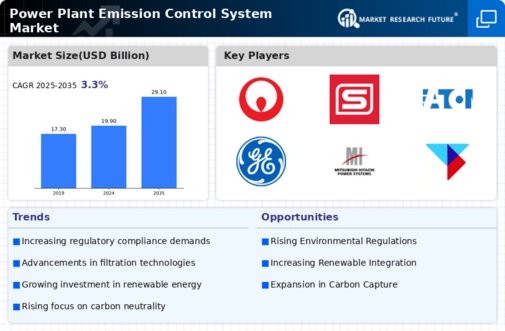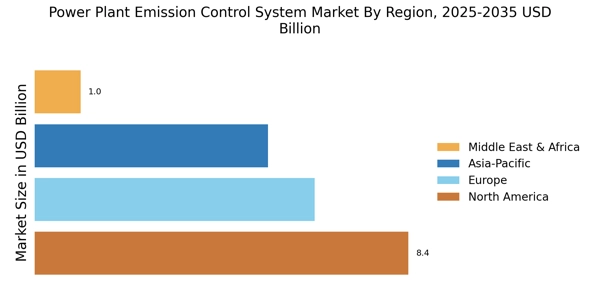Technological Advancements
Technological advancements play a pivotal role in shaping the Power Plant Emission Control System Market. Innovations in emission control technologies, such as selective catalytic reduction (SCR) and flue gas desulfurization (FGD), are enhancing the efficiency of power plants in reducing harmful emissions. The integration of artificial intelligence and machine learning in monitoring systems is also gaining traction, allowing for real-time data analysis and optimization of emission control processes. According to recent estimates, the market for advanced emission control technologies is expected to grow at a CAGR of 7% from 2025 to 2030. This growth is indicative of the increasing reliance on technology to meet environmental standards and improve operational efficiency within the Power Plant Emission Control System Market.
Economic Incentives and Funding
Economic incentives and funding mechanisms are crucial drivers for the Power Plant Emission Control System Market. Governments and financial institutions are increasingly offering grants, tax credits, and subsidies to encourage the adoption of emission control technologies. These financial incentives lower the barriers to entry for power plants looking to upgrade their systems, making it more feasible to invest in advanced emission control solutions. For instance, the U.S. Department of Energy has allocated significant funding for research and development in emission control technologies, which is expected to stimulate market growth. As these economic incentives continue to evolve, they are likely to enhance the attractiveness of the Power Plant Emission Control System Market, fostering innovation and expansion.
Regulatory Compliance and Standards
The Power Plant Emission Control System Market is significantly influenced by stringent regulatory frameworks aimed at reducing emissions from power plants. Governments worldwide are implementing increasingly rigorous standards to combat air pollution and climate change. For instance, regulations such as the Clean Air Act in the United States mandate specific emission limits for various pollutants. This regulatory pressure compels power plants to invest in advanced emission control technologies, thereby driving market growth. The market is projected to reach USD 25 billion by 2026, reflecting the urgency for compliance. As regulations evolve, the demand for innovative solutions in the Power Plant Emission Control System Market is expected to rise, pushing companies to adopt state-of-the-art technologies to meet these requirements.
International Agreements and Climate Goals
International agreements and climate goals are shaping the landscape of the Power Plant Emission Control System Market. Commitments made under accords such as the Paris Agreement are driving nations to implement policies aimed at reducing greenhouse gas emissions. These global initiatives create a framework for countries to enhance their emission control strategies, thereby increasing the demand for advanced technologies in the power sector. As countries strive to meet their climate targets, investments in emission control systems are expected to surge. The market is anticipated to witness a compound annual growth rate of 6% over the next five years, reflecting the urgency to comply with international climate commitments. This trend underscores the critical role of the Power Plant Emission Control System Market in achieving global sustainability objectives.
Public Awareness and Demand for Clean Energy
The rising public awareness regarding environmental issues is a significant driver for the Power Plant Emission Control System Market. As communities become more informed about the impacts of air pollution and climate change, there is a growing demand for cleaner energy solutions. This shift in consumer preferences is prompting power generation companies to adopt more sustainable practices, including the implementation of effective emission control systems. Market Research Future indicates that approximately 70% of consumers are willing to pay a premium for energy sourced from cleaner technologies. Consequently, this heightened demand for clean energy is likely to propel investments in the Power Plant Emission Control System Market, as companies strive to align their operations with public expectations.


















Leave a Comment